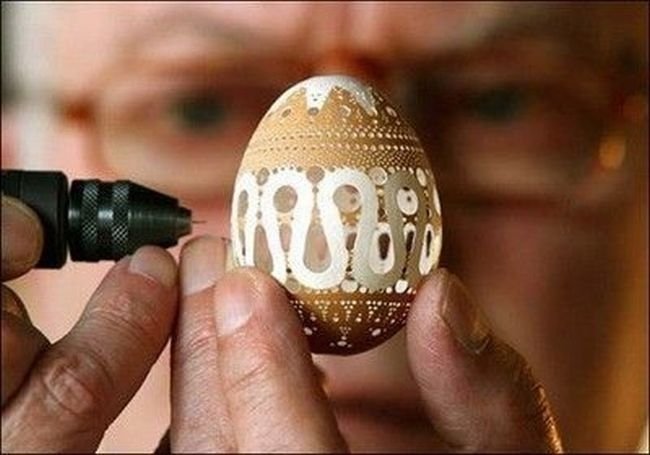|
|
Egg Shell Art
|
In the east, Islamic art's rejection of iconography led to emphasis on geometric patterns, calligraphy, and architecture. Further east, religion dominated artistic styles and forms too. India and Tibet saw emphasis on painted sculptures and dance, while religious painting borrowed many conventions from sculpture and tended to bright contrasting colors with emphasis on outlines. China saw the flourishing of many art forms: jade carving, bronzework, pottery (including the stunning terracotta army of Emperor Qin), poetry, calligraphy, music, painting, drama, fiction, etc. Chinese styles vary greatly from era to era and each one is traditionally named after the ruling dynasty. So, for example, Tang Dynasty paintings are monochromatic and sparse, emphasizing idealized landscapes, but Ming Dynasty paintings are busy and colorful, and focus on telling stories via setting and composition. Japan names its styles after imperial dynasties too, and also saw much interplay between the styles of calligraphy and painting. Woodblock printing became important in Japan after the 17th century.
The western Age of Enlightenment in the 18th century saw artistic depictions of physical and rational certainties of the clockwork universe, as well as politically revolutionary visions of a post-monarchist world, such as Blake's portrayal of Newton as a divine geometer, or David's propagandistic paintings. This led to Romantic rejections of this in favor of pictures of the emotional side and individuality of humans, exemplified in the novels of Goethe. The late 19th century then saw a host of artistic movements, such as academic art, Symbolism, impressionism and fauvism among others.
The history of twentieth century art is a narrative of endless possibilities and the search for new standards, each being torn down in succession by the next. Thus the parameters of Impressionism, Expressionism, Fauvism, Cubism, Dadaism, Surrealism, etc. cannot be maintained very much beyond the time of their invention. Increasing global interaction during this time saw an equivalent influence of other cultures into Western art, such as Pablo Picasso being influenced by African sculpture. Japanese woodblock prints (which had themselves been influenced by Western Renaissance draftsmanship) had an immense influence on Impressionism and subsequent development. Later, African sculptures were taken up by Picasso and to some extent by Matisse. Similarly, the west has had huge impacts on Eastern art in the 19th and 20th centuries, with originally western ideas like Communism and Post-Modernism exerting a powerful influence on artistic styles.
Modernism, the idealistic search for truth, gave way in the latter half of the 20th century to a realization of its unattainability. Relativism was accepted as an unavoidable truth, which led to the period of contemporary art and postmodern criticism, where cultures of the world and of history are seen as changing forms, which can be appreciated and drawn from only with irony. Furthermore the separation of cultures is increasingly blurred and some argue it is now more appropriate to think in terms of a global culture, rather than regional cultures.
|
|









